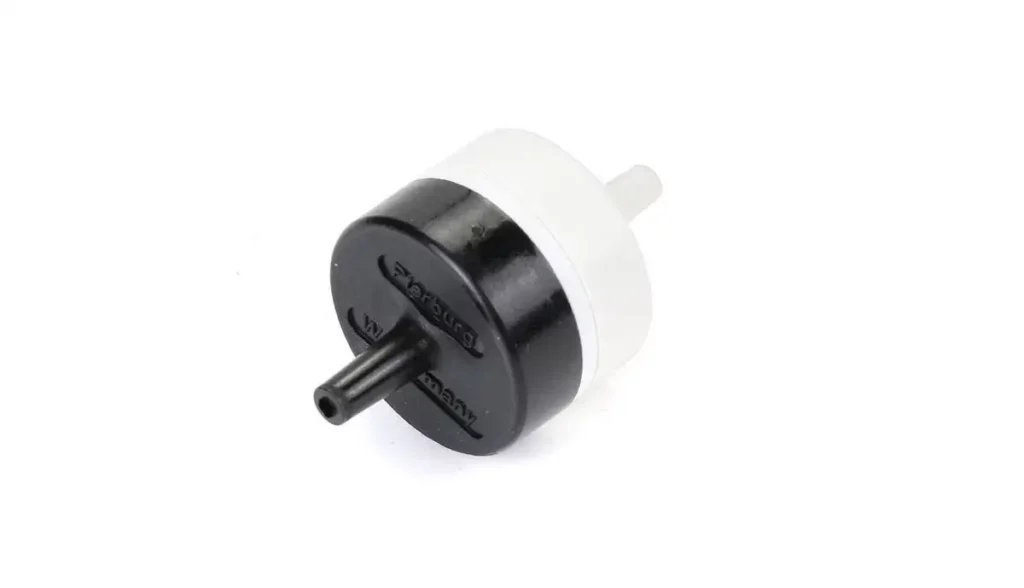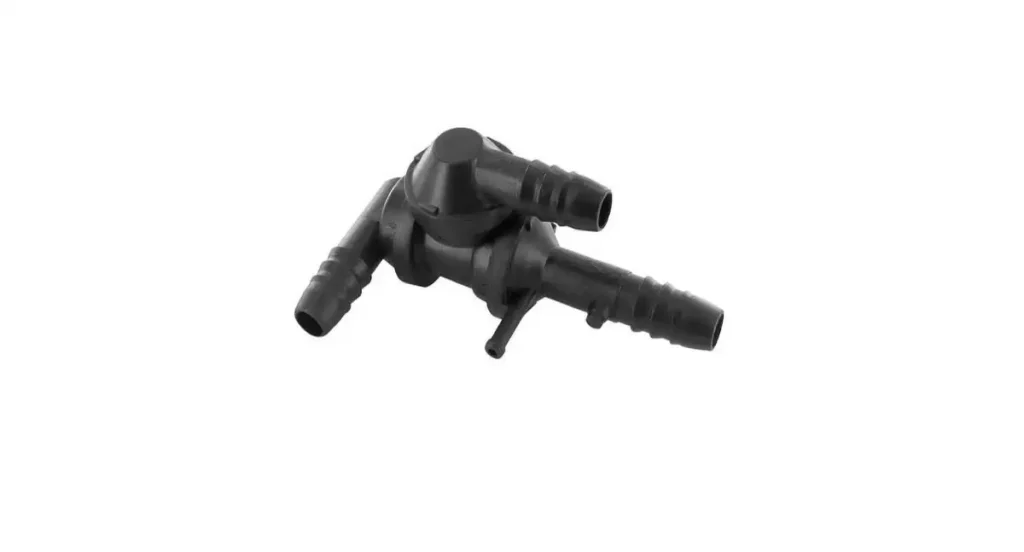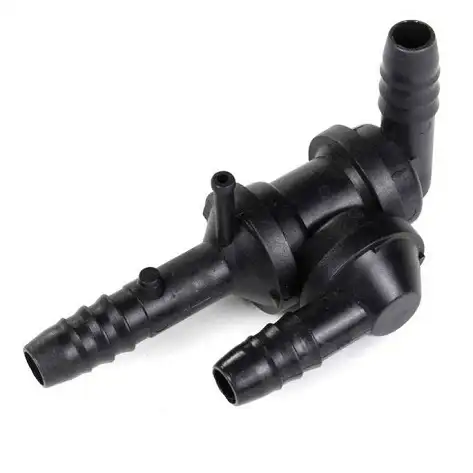The vacuum system in your car plays a critical role in the seamless operation of various essential components, from brake boosters to emissions controls. Among the key elements within this system is the often overlooked yet indispensable component — the vacuum check valve. While small in size, this valve ensures the proper flow of vacuum pressure in the right direction, preventing backflow and maintaining system integrity. However, like any automotive part, vacuum check valves are not immune to issues.
In this blog post, we will delve into the world of vacuum check valve issues, shedding light on their importance, common problems that can arise, and the impact they have on your vehicle’s performance. Whether you’re a car enthusiast or simply seeking to understand more about your vehicle’s inner workings, this guide will provide you with the knowledge you need to identify, address, and resolve vacuum check valve issues effectively.

What Is a Vacuum Check Valve?
A vacuum check valve, also known as a one-way valve or a vacuum control valve, is a component used in the vacuum system of a car. The vacuum system plays a crucial role in the operation of various systems in a vehicle, including the brake booster, HVAC controls, emissions controls, and more.
The purpose of a vacuum check valve is to ensure the proper functioning of the vacuum system by allowing the flow of vacuum in only one direction. It is a mechanical valve that allows vacuum to pass through in one direction while preventing backflow or leakage in the opposite direction. This helps maintain a stable vacuum level and prevents loss of vacuum pressure, which could affect the performance of various systems.
In the case of a brake booster, for example, the vacuum check valve allows the engine to generate vacuum pressure, which is then used to assist the driver in applying the brakes. Without the check valve, the vacuum pressure could dissipate when the engine is not running, leading to a loss of power assist in the brake system.
Vacuum check valves are typically made of durable materials such as plastic or metal to withstand vacuum pressure and ensure long-lasting performance. They are often installed in-line within the vacuum hoses or tubing of the respective systems they serve.
If a vacuum check valve becomes faulty or fails, it can lead to various issues such as loss of vacuum pressure, decreased performance of vacuum-dependent systems, or even vacuum leaks. In such cases, it is necessary to diagnose the problem and replace the faulty valve to restore the proper functioning of the affected systems.
Get quality vacuum check valves for your car!
Symptoms of Vacuum Check Valve Failure

A vacuum check valve may be a small component, but its failure can have significant repercussions on the performance of your vehicle’s vacuum system. It’s important to be aware of the symptoms that can arise when a vacuum check valve starts to malfunction or fails altogether. Recognizing these signs early on can save you from potential headaches and more extensive repairs down the road. Here are some common symptoms to watch out for:
Loss of Brake Power Assist
One of the primary functions of a vacuum check valve is to maintain vacuum pressure for the brake booster, enabling power assist during braking. If the check valve fails, it can lead to a gradual loss of vacuum pressure, resulting in a stiff or unresponsive brake pedal. If you notice increased effort required to engage the brakes or a decrease in braking effectiveness, a faulty vacuum check valve may be the culprit.
Poor HVAC Performance
The heating, ventilation, and air conditioning (HVAC) system in your car relies on vacuum pressure to control the various functions, such as changing airflow direction and regulating temperature. A failing check valve can disrupt the flow of vacuum, leading to erratic HVAC performance. You might experience issues like incorrect airflow direction, limited temperature control, or inadequate air circulation within the cabin.
Engine Performance Issues
In some vehicles, the vacuum system plays a crucial role in controlling engine-related functions, such as the exhaust gas recirculation (EGR) system or the variable valve timing (VVT) system. A malfunctioning vacuum check valve can cause irregular vacuum levels, impacting the performance of these systems. Symptoms may include rough idling, decreased engine power, or even engine misfires.
Unusual Vacuum Leaks
A failing check valve can result in vacuum leaks within the system. You might notice hissing sounds from under the hood, particularly around the vacuum hoses or near the faulty valve. Vacuum leaks can lead to a drop in overall system efficiency, affecting multiple components that rely on proper vacuum pressure.
Check Engine Light Activation
A malfunctioning vacuum check valve can trigger the vehicle’s onboard diagnostic system, causing the check engine light to illuminate on the dashboard. Since the vacuum system is closely tied to various emissions control components, such as the EVAP system, a fault in the vacuum check valve can trigger relevant trouble codes and illuminate the check engine light.
Causes of Vacuum Check Valve Failure

Understanding the potential causes of vacuum check valve failure can help you take proactive measures to prevent such issues and maintain the optimal performance of your vehicle’s vacuum system. While these valves are generally reliable, several factors can contribute to their failure. Let’s explore some common causes:
Wear and Tear
Over time, continuous exposure to heat, pressure, and vibration can take a toll on the vacuum check valve. The constant opening and closing of the valve can lead to internal components wearing out or becoming loose, compromising its functionality. Additionally, exposure to corrosive substances or contaminants present in the vacuum system can accelerate wear and contribute to valve failure.
Clogging and Contamination
The vacuum system can accumulate debris, dirt, or moisture over time. If the check valve becomes clogged or contaminated, it can obstruct the flow of vacuum or prevent the valve from closing properly. This can result in reduced or erratic vacuum pressure, affecting the performance of various systems dependent on vacuum.
Improper Installation
Incorrect installation of the vacuum check valve can lead to premature failure. If the valve is not properly aligned, secured, or connected to the vacuum lines, it can cause leaks, hinder proper flow direction, or disrupt the vacuum system’s overall integrity. It is essential to follow the manufacturer’s guidelines and ensure a proper installation to avoid potential issues.
Environmental Factors
Extreme temperature fluctuations, exposure to harsh chemicals, or environmental conditions like excessive moisture can impact the durability and functionality of the check valve. For instance, prolonged exposure to high heat can cause the valve’s internal seals or diaphragm to deteriorate, leading to leaks or valve failure.
Manufacturer Defects
While relatively rare, manufacturing defects can contribute to premature check valve failure. These defects can manifest as design flaws, substandard materials, or faulty construction, making the valve more susceptible to wear, leakage, or malfunction.
Excessive Vacuum Pressure
In some cases, the vacuum system can experience abnormally high vacuum pressure due to a malfunctioning component or system. The excess pressure can put undue stress on the check valve, causing it to fail or rupture. It’s important to address any underlying issues causing excessive vacuum pressure to prevent damage to the valve and other vacuum system components.
By being aware of these potential causes, you can take proactive steps to minimize the risk of vacuum check valve failure. Regular inspections, proper maintenance of the vacuum system, and addressing any issues promptly can help prolong the lifespan of the valve and ensure the smooth operation of your vehicle’s vacuum-dependent systems.
The Importance of Quality Vacuum Check Valves

When it comes to purchasing a vacuum check valve for your vehicle, it’s worth considering investing in a high-quality option, even if it comes with a slightly higher price tag. Quality valves offer enhanced reliability and durability, as they are constructed using robust materials designed to withstand the demands of the vacuum system over an extended period. By opting for a reliable and durable check valve, you minimize the risk of premature failure, ensuring optimal performance and avoiding costly repairs down the line.
A quality vacuum check valve provides consistent and precise control over the flow of vacuum pressure. It maintains a secure seal in one direction while allowing smooth and unrestricted flow in the desired direction. This ensures that vacuum-dependent systems, such as brake boosters or HVAC controls, receive a consistent and reliable vacuum supply, promoting optimal functionality and safety.
Additionally, investing in a high-quality valve improves system efficiency, leading to better fuel economy, reduced emissions, and potentially saving you money in the long run. Moreover, it offers peace of mind, knowing that critical systems like the brake booster will function properly when needed, contributing to your overall safety on the road.
Get Quality Vacuum Check Valves at eEuroparts.com!
Here at eEuroparts.com, we stock parts made by some of the most reputable brands in the industry. Our selection of vacuum check valves includes products made by Pierburg, Vaico, and many others. To find one that matches your car, head over to our store, select your vehicle, and get a product that is a guaranteed fit.




